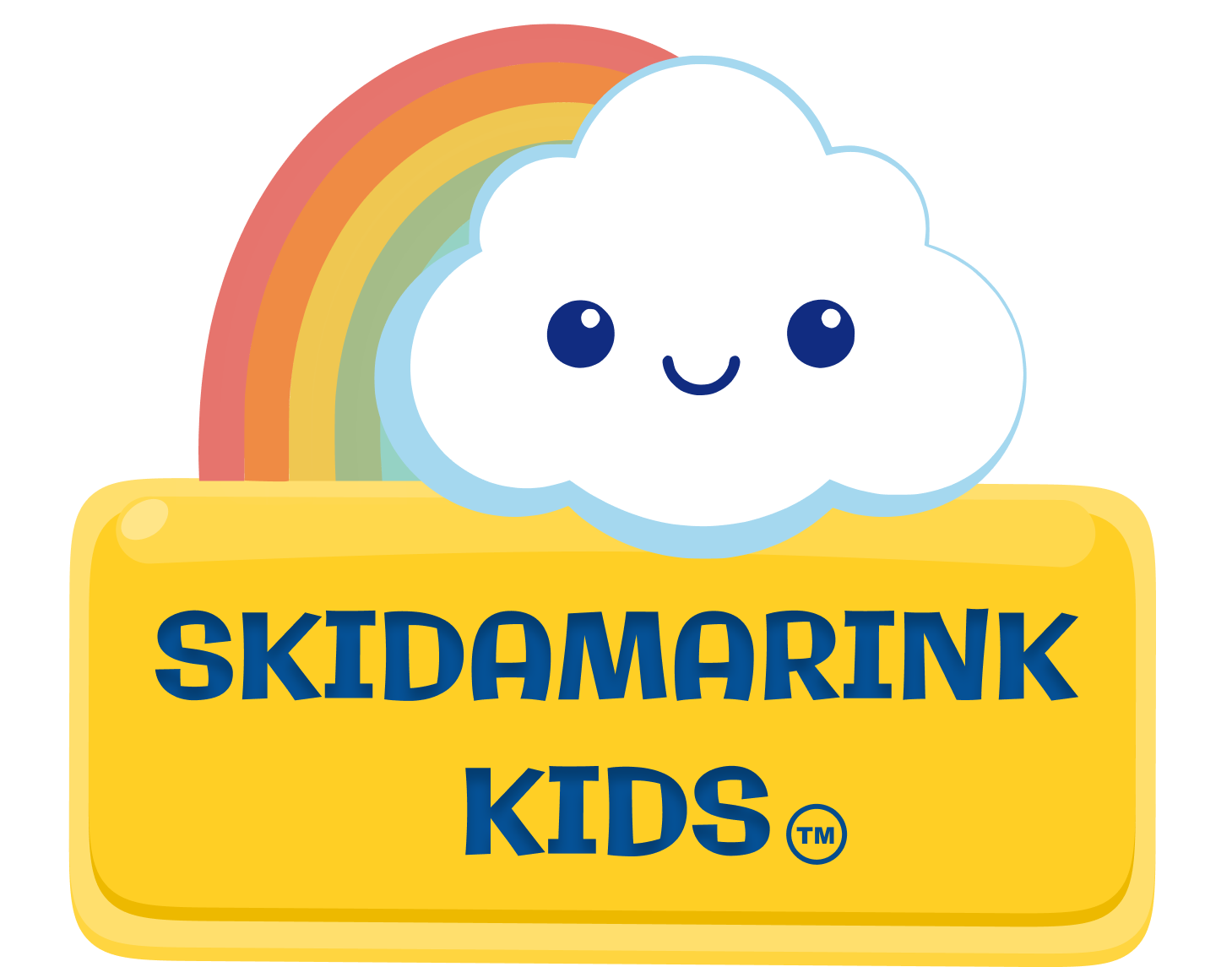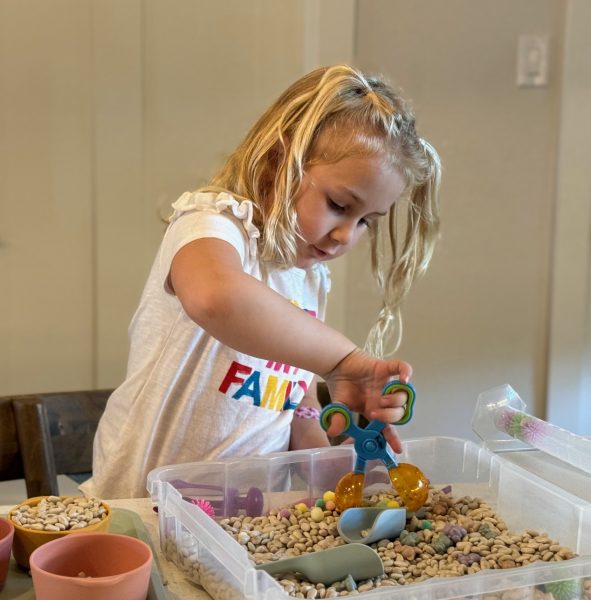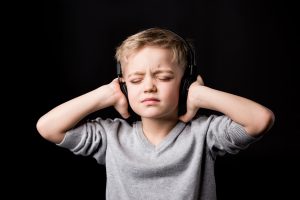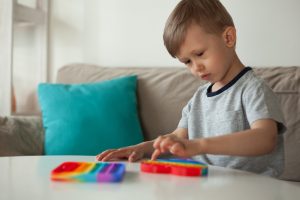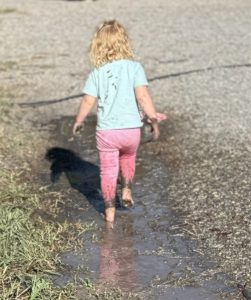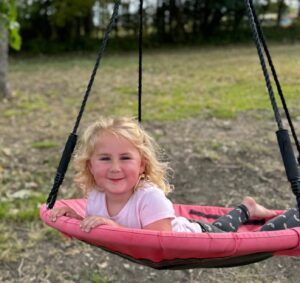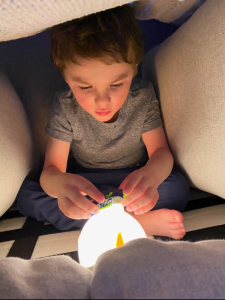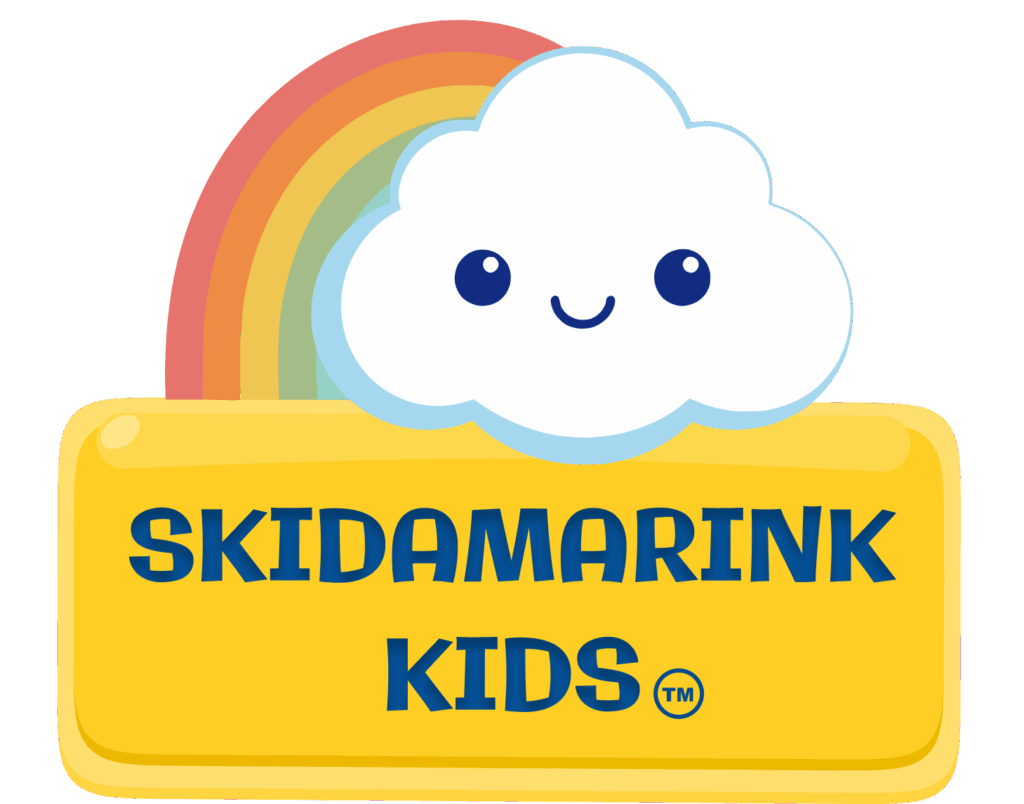What Are Sensory Bins?
Sensory bins are containers filled with materials that stimulate one or more of the senses. They typically include:
- A base material (like rice, beans, or water)
- Tools for exploration (scoops, tongs, measuring cups)
- Themed elements (toys, natural items, or seasonal objects)
- A container to hold everything together
Setting Up Space for Your Sensory Bins
Location Tips:
- Place on a blanket or mat for easy cleanup
- Store with a secure lid when not in use
- Use a kiddie pool for larger sensory experiences
- Keep cleaning supplies handy
- Set up where you can easily provide supervision, which provides:
- Safe play opportunities
- Screen-free entertainment
- Positive distraction during busy times for parents such as meal prep
Materials for Sensory Bins
Base Options:
- Dry Materials:
- Uncooked rice (can be colored with food coloring)
- Dried pasta
- Dry beans
- Sand
- Birdseed
- Oats
- Coffee grounds
- Wet Materials:
- Water
- Slime
- Cooked pasta
- Water beads
- Shaving cream
- Pudding
- Natural Items:
- Rocks
- Leaves
- Sticks
- Pine cones
- Flower petals
Engaging Mix-Ins:
- Craft pom-poms in various sizes and colors
- Small toys such as sorting bears or miniature characters
- Feathers
- Seasonal items (plastic eggs, artificial snow, etc.)
- Glitter (eco-friendly options available)
- Buttons
- Shells
- Plastic animals
Tools for Exploration:
- Measuring cups and spoons
- Tongs and tweezers
- Sand box toys
- Small bowls and containers
- Droppers and pipettes
- Scooper scissor tongs
- Kids’ tweezers
- Funnels
- Sifters
- Small brushes
Age-Appropriate Sensory Bins
Toddlers (18-30 months)
Focus on:
- Large, simple materials that minimize choking hazards
- Basic scooping and pouring activities
- Supervised water play
- Single-texture bins to start
- Sturdy, easy-to-grip tools
Great starter bases:
- Rice
- Water
- Oatmeal
- Large pasta shapes

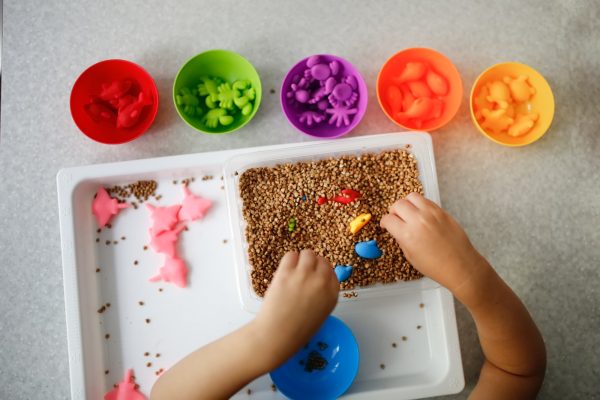
Preschoolers (30 months-5 years)
Include:
- Sorting activities
- Simple tools like tongs and spoons
- Mixed textures
- Basic counting games
- Color matching opportunities
- Themes that match current interests
Engaging bases:
- Colored rice
- Water with bubbles
- Slime
- Kinetic sand
School Age (5-7 years)
Add:
- Complex patterns and designs
- Multiple tools for different functions
- Learning activities tied to school concepts
- Science concepts like sink/float
- Letter or number recognition elements
Advanced bases:
- Mixtures of materials
- Water with added elements (color, soap, ice)
- More challenging textures
- Materials that change (like ice that melts)

Ideas for Themed Sensory Bins
Seasonal or Holiday Themes
Examples:
- Fall: Corn kernels, mini pumpkins, artificial leaves, cinnamon sticks
- Winter: Artificial snow, cotton balls, red and green craft pom-poms, red and green dyed rice, small holiday toys
- Spring: Plastic four-leaf clovers, green beaded necklaces, flower petals, plastic Easter eggs
- Summer: Sand, shells, water, tropical-themed toys
Learning Themes
Interest-Based Themes
Ideas:
- Numbers: Counting bears, dice, number cards hidden in rice
- Letters: Alphabet beads or puzzle pieces, magnetic letters
- Colors: Color-sorted items, items for mixing and matching
- Shapes: Pattern blocks, shape sorters, shape cards
Popular Options:
- Construction: Rocks, tools, small construction vehicles
- Animals: Farm/zoo figures, colored “habitats”
- Ocean: Blue rice or water, sea creatures, shells
- Space: Black beans, stars, planet figurines
- Dinosaurs: Green rice “grass,” dinosaur figures, small rocks
- Transportation: Blue water “roads,” small cars and trucks
- Fairy Garden: Moss, small flowers, fairy figurines
Activity Ideas for Sensory Bins
Dry Sensory Play
Water Play
Options:
- Sorting items by colors
- Bean scooping races
- Transferring items with tongs
- Hidden object hunts
- Pattern making
- Burying and “excavating” toys
- Filling and emptying containers
Activities:
- Pouring practice
- Color mixing with food coloring
- Sponge squeezing for water transfer
- Float/sink exploration
- Squeezing bath toys
- Pouring water through sand toy spinners
- Picking up ping pong balls using scooper tongs
- Squirting objects with small water guns
Food-Based Play
Ingredients:
- Drawing in pudding on a placemat
- Crushing graham crackers to make “sand”
- Playing with cooked spaghetti noodles (can dye with natural food colors)
- Dipping food in whipped cream
- Making edible slime
Nature Bins
Materials:
- Drawing in sand
- Sorting rocks and shells
- Building with small sticks
- Leaf rubbing and printing
- Creating small fairy gardens
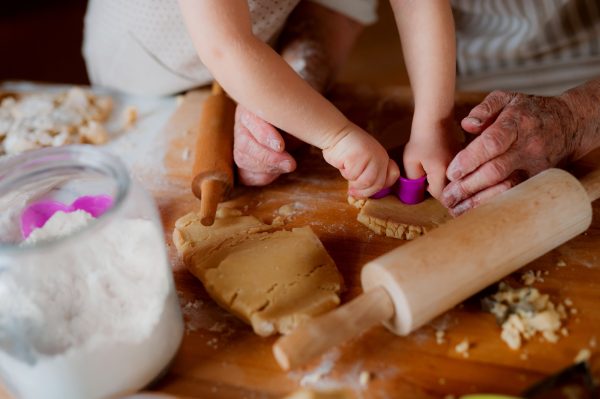
Supporting Sensory-Sensitive Children
For children who may be hesitant or overwhelmed by sensory experiences, a gentle approach can help:
- Start with dry items before introducing messier materials
- Encourage tool use before direct touch
- Allow for gradual exposure at the child’s pace
- Let the child lead the exploration
- Celebrate all progress, no matter how small
- Provide a way to clean hands nearby
- Begin with smaller amounts of material
- Consider starting with familiar textures
Daily Integration
Make sensory bin play a beneficial part of your child's regular routine:
- Set predictable times for sensory play
- Keep materials fresh and interesting
- Change themes seasonally or with your child’s interests
- Follow your child’s natural curiosity
- Maintain consistency in availability
- Use sensory bins during transition times
- Incorporate them into learning activities
Troubleshooting Common Challenges
Mess Management
- Use a plastic tablecloth or shower curtain under the bin
- Play outside when possible
- Have a small handheld vacuum nearby
- Use bins with high sides
- Establish clear boundaries about where materials can go
Behavioral Concerns
- Throwing: Set clear rules and demonstrate proper use
- Eating materials: Provide close supervision and use food-grade materials when possible
- Overstimulation: Simplify the bin and limit time
- Short attention span: Rotate items frequently and follow interests
- Conflicts over sharing: Use a timer or create duplicate stations
Safety Considerations
Important Notes:
- Always supervise sensory play, especially with younger children
- Check for choking hazards before introducing materials
- Choose age-appropriate items
- Clean materials regularly to prevent mold growth
- Store safely away from pets and very young children
- Consider allergies when selecting materials
- Avoid small items for children who mouth objects
Pro Tips:
- Start simple and gradually build complexity
- Observe what genuinely engages your child
- Follow their lead in exploration
- Keep sessions manageable – 15-20 minutes is often perfect
- Clean as you go to make the experience more enjoyable
- Pinterest is a great resource for themed bin ideas
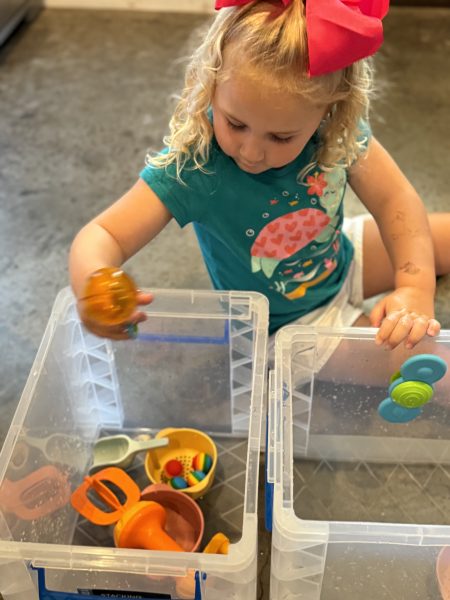
Start Creating Sensory Bins Today!
Creating sensory bins for children doesn’t need to be complicated or expensive. Many materials can be found in your pantry or backyard. The key is providing varied, interesting sensory experiences that match your child’s developmental level and interests. By incorporating regular sensory bin play into your routine, you’re supporting your child’s sensory processing, fine motor skills, cognitive development, and emotional regulation—all while they have fun exploring and creating.
Check out our companion blog, “Learn the Benefits of Sensory Bins and Fidgets for Children” to learn the science behind why sensory tools actually work.
– Kendra
